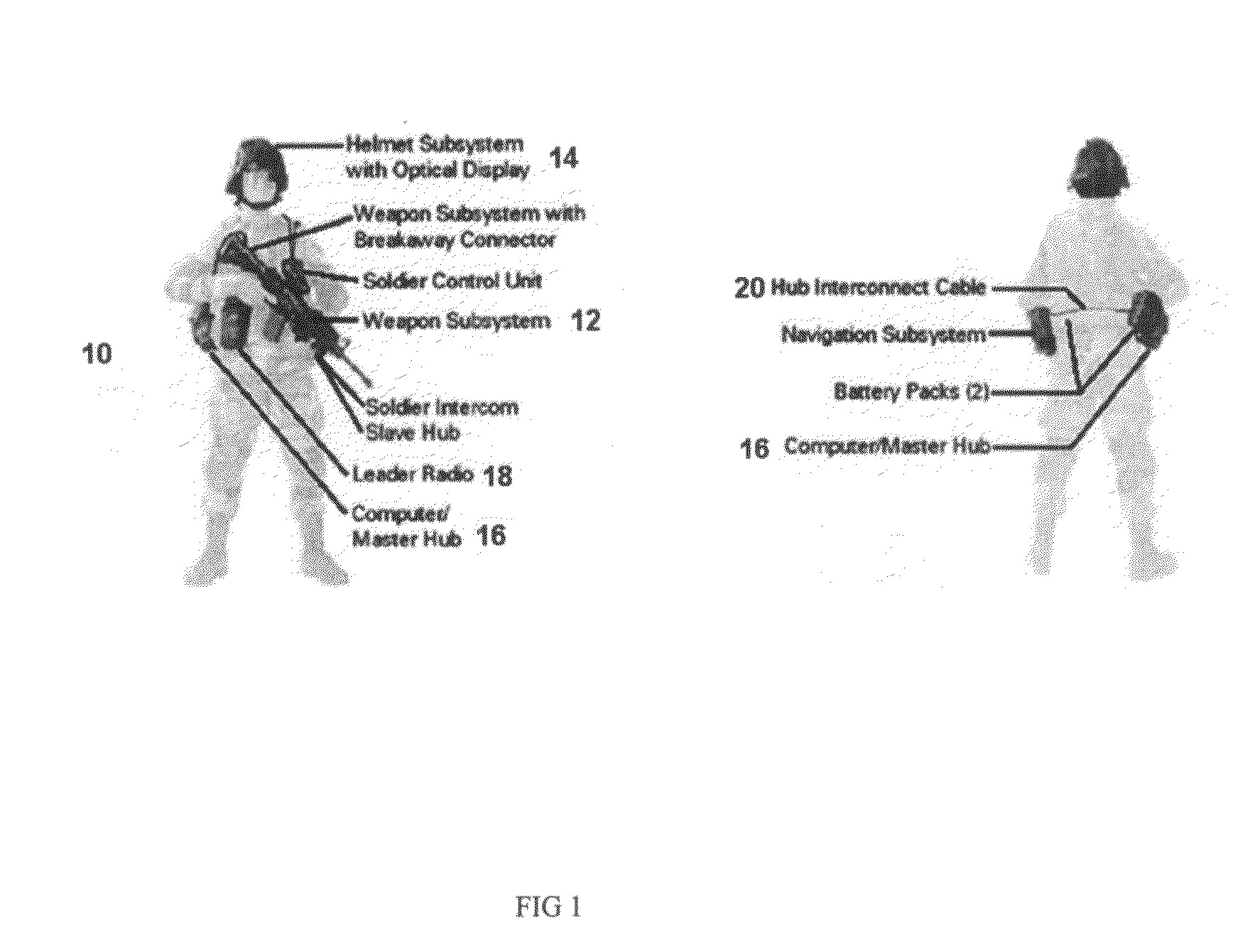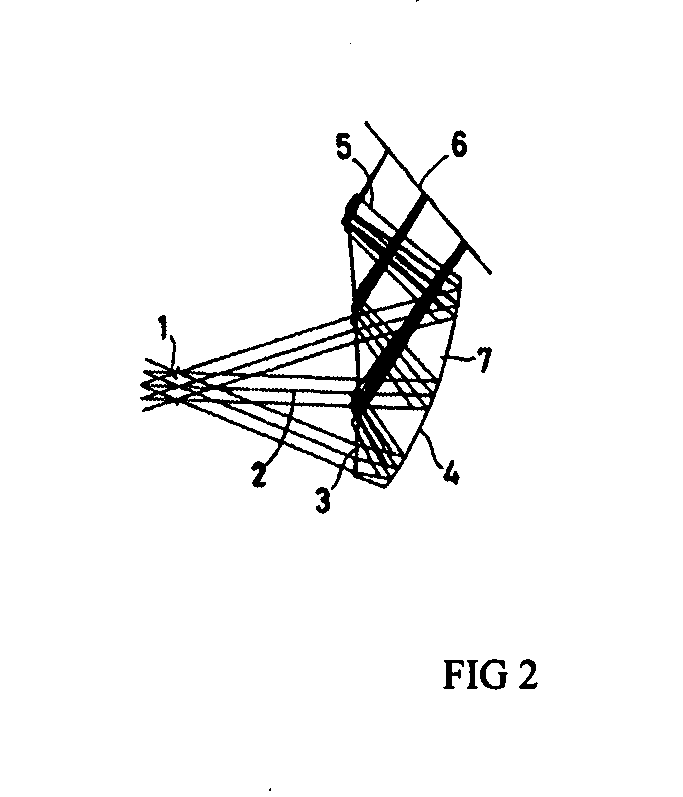High resolution head mounted projection display
a projection display and high resolution technology, applied in the field of projection displays, can solve the problems of complex tradeoffs in the design of the hmpd, optics is not optimized for detection and recognition capabilities, and the weight of the hmpd components, and achieve the effect of increasing the brightness of the imag
- Summary
- Abstract
- Description
- Claims
- Application Information
AI Technical Summary
Benefits of technology
Problems solved by technology
Method used
Image
Examples
Embodiment Construction
[0032]Before explaining the disclosed embodiments of the present invention in detail, it is to be understood that the invention is not limited in its application to the details of the particular arrangements shown since the invention is capable of other embodiments. Also, the terminology used herein is for the purpose of description and not of limitation.
[0033]Referring to FIG. 3, an exemplary embodiment is illustrated generally at 50. A housing 52 contains an optics system which includes a miniature display 54, a mirror 56, a projection lens, preferably a landscape lens 58, a beam splitter 60, and a retro-reflective screen (also referred to as a retro-reflector) 62 for outputting the rays to an eye 64. A lens 66 with a Focal Number (Fno.) equal to about 1 and generally between 0.1 and 3.0 is located between the landscape lens and the beam splitter. A second lens 68 with an Fno. equal to about 1 and generally between 0.1 and 3.0 is located between the beam splitter 60 and the eye 64...
PUM
 Login to View More
Login to View More Abstract
Description
Claims
Application Information
 Login to View More
Login to View More - R&D
- Intellectual Property
- Life Sciences
- Materials
- Tech Scout
- Unparalleled Data Quality
- Higher Quality Content
- 60% Fewer Hallucinations
Browse by: Latest US Patents, China's latest patents, Technical Efficacy Thesaurus, Application Domain, Technology Topic, Popular Technical Reports.
© 2025 PatSnap. All rights reserved.Legal|Privacy policy|Modern Slavery Act Transparency Statement|Sitemap|About US| Contact US: help@patsnap.com



